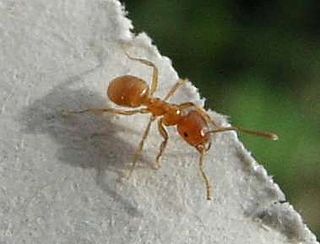 W
WAcanthocephala latipes is a species of leaf-footed bug in the family Coreidae. It is found in Central and South America.
 W
WCamponotus maculatus is a species of carpenter ant.
 W
WDictyla echii is a species of lace bug in the family Tingidae. It is found in Africa, Europe and Northern Asia, North America, and Southern Asia.
 W
WEciton hamatum is a species of army ant in the subfamily Dorylinae; it is found from Mexico to central Brazil and Bolivia. The species differs from Eciton burchellii, in that it does not fan out into the underbrush when foraging. Rather, it forages in columns, often in trees and preying exclusively on the larvae of other social insects. Its prey are often broods of vespid wasps and ants of genera Dolichoderus and Camponotus, suggesting that E. hamatum is mainly an arboreal forager.
 W
WKerria lacca is a species of insect in the family Kerriidae, the lac insects. These are in the superfamily Coccoidea, the scale insects. This species is perhaps the most commercially important lac insect, being a main source of lac, a resin which can be refined into shellac and other products. This insect is native to Asia.
 W
WMegaloprepus caerulatus is a damselfly of the Forest Giant family (Pseudostigmatidae), found in wet and moist forests in Central and South America. It has the greatest wingspan of any living damselfly or dragonfly, up to 19 centimeters (7.5 inches) in the largest males. Its large size and the markings on its wings make it a conspicuous species; a hovering Megaloprepus has been described as a "pulsating blue-and-white beacon".
 W
WMicrotomus purcis is a species of assassin bug in the family Reduviidae. It is found in North America.
 W
WThe yellow meadow ant,, is one of the most common ants in Central Europe, and it also occurs in Asia and North Africa, but populations in North America are a different, related species.